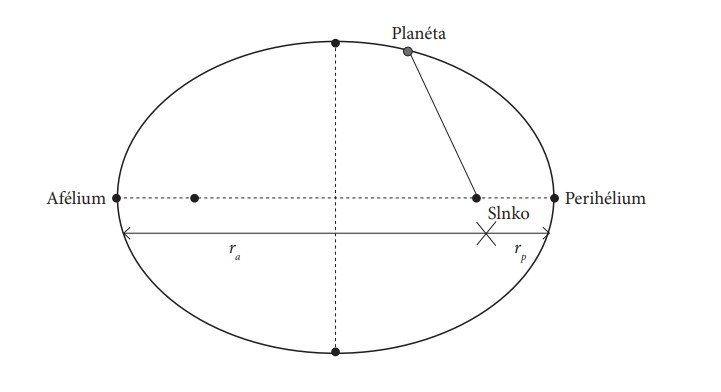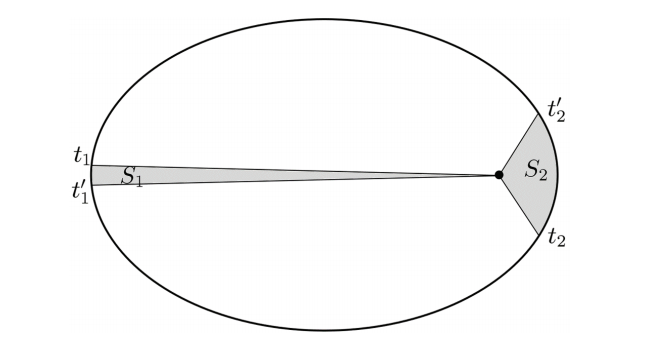Kepler´s laws
Kepler´s first law:
It follows from Kepler's 1st law that planets move along planar closed curves. Fig. 2 depicts a specific trajectory of the planet with the Sun in focus. The point of the ellipse closest to the Sun is called the perihelion and the farthest point of the Sun aphelion. The distances from the focus are marked rp and ra respectively. Fig. 2 represents the radius vector of the planet (the line joining the planet and the Sun). Fig. 2 shows:

Kepler´s second law:
The meaning of Kepler's 2nd law is described in Fig. 3. Two time intervals , are recorded, which correspond to the areas described by the vectors
and
. respectively. It follows from Kepler's 2nd law that if
, then
.

Kepler´s third law:
which we can read as
In the solar system, it makes natural sense for the orbital periods to be calculated in years and the semi major axes in astronomical units (abbreviated as "au", i.e. astronomical unit). For the Earth: au,
= 1 year.
Note: The attentive reader might notice that this wording of the law is functional for any (physically justified) units. In other words, we can calculate the period in years, as well as in seconds or hours, the relation will still be valid. A similar reasoning applies to the semi major axis. The semi major axis can be calculated in astronomical units, as well as in meters or kilometres and the like.
Let's look at an example:
The share of periods did not depend on the units in which we calculated, because the conversion factor of 24 · 3 600 was reduced in a fraction.
Let's take our reasoning even further and show that it is possible to work even in dimensionless quantities. Let us define the (dimensionless) relative distance aʹ and the relative period Tʹ, which say how much is the distance, resp. period greater than a, resp. T:
where are semi major axis and period of the Earth.
If a = 1,5 au, then aʹ = 1,5 and so on.


